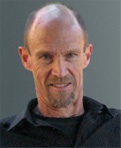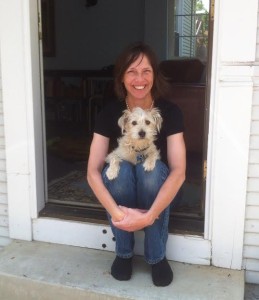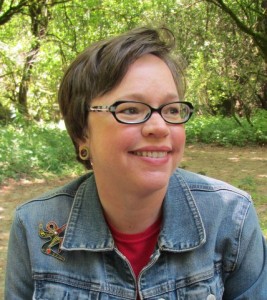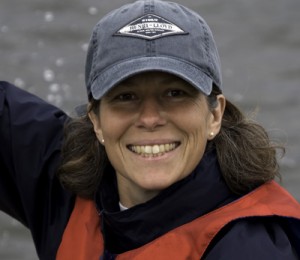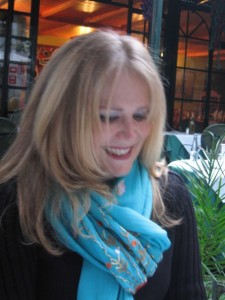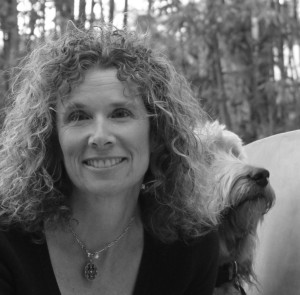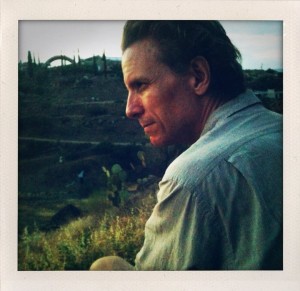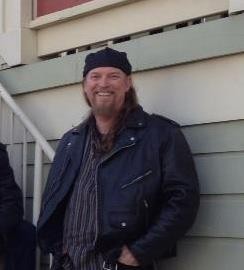
Eugene Cross: Your story “Like Juliet and Romeo” is such a quietly moving piece. So much is left unsaid and I felt that contributed to the overall power of the prose. Can you talk a bit about the inspiration for, or origins of this story?
Kevin Winchester: Thanks. This story emerged from a couple of different places. I wrote another story a year or so back, “Waiting on Something to Happen,” and the main character, Joe, is trying to find his way in the world after his wife passes away. I approached the revisions of that story with the idea of Keats’ negative capabilities in mind. I understood how his theory applied to poetry, how the poets employed it, and the challenge of integrating that into fiction intrigued me. Sure, doing that in fiction is nothing new, but it wasn’t—isn’t—something that was in my writing tool box, so I wanted to explore it. And in “Waiting…” Joe very much seemed to be a man not only “capable of being in uncertainties,” as Keats put it, but a man convinced that all was uncertainty. And yet, as a character, he was a very pragmatic man, a man who tried to live his life based on fact and reason, which made it even more challenging for me. I finished that story and it turned out okay I guess—it won the 2013 Thomas Wolfe Fiction Award, which kinda implies the story was finished—but I had a hard time moving past it, something about it wouldn’t leave me alone. Joe’s wife, Patty, wasn’t in the first story in any corporeal way, only a brief and vague flashback, a memory at best, nothing that gave her much of a physical presence. But, she was real for Joe, and for me, too, I suppose. I worked on some other pieces, toyed with some ideas, and I noticed most of those ideas revolved around characters that felt oddly familiar. I began to see the possibilities for linked short stories. Thematically, I thought I “had it,” thought I knew what I was doing, but I couldn’t generate much momentum in the other stories. Finally, I saw that what really linked the ideas was Patty, the themes, setting, stories, all of it; without Patty, there was no connection. I stopped drafting the other pieces and focused on Patty. I didn’t want to move back in time, back to a period when she was alive, because I found how everyone else lived with her absence much more compelling—their recovery, in a manner of speaking. As the comics say, death’s easy, you know? I eventually saw the obvious—Patty speaking as an absent narrator allowed me to explore negative capabilities even more, which led to “Like Romeo and Juliet.” My hope then, at least in regard to my hopes of achieving that negative capability, was that the authority of Patty, the unnamed, absent, yet vaguely omniscient narrator, would enhance that sense of power. And, I had to let her tell a part of the larger story before I could move on to the other pieces. Likewise, she needs to have this conversation with Joe so he can move on, too.
EC: From the changing of the seasons to sunset in Florence to that arresting image of the hawk striking the rabbit, the natural world plays heavily in your work. How does setting and nature affect your writing?
KW: The old saying is “write what you know,” and that’s pretty much all I know. I’ve tried to step out of that sensibility occasionally, but I just can’t do it. I’ve probably spent more time outdoors than inside over the course of my life. It’s where I’m most comfortable. For me, moving away from the natural world dampens the senses, blurs the lines, reduces everything to shadow or silhouette. I find a sharpness in Nature that provides clarity. I used to rock climb— combining a vertical granite face, three or four hundred feet of exposure and gravity will make you see things pretty clearly. And too, I’m a Southerner, a Southern writer (whatever that means anymore). It all starts with a sense of place, both on the page and in my life. So, I suppose you could say that setting and Nature affect all aspects of my writing, or at least, it informs all aspects of my writing. For instance, when story ideas first come to me, I see a character. Most times, that character is either outside, in nature, literally, or is being affected by natural forces.
EC: I really loved the point of view in “Like Juliet and Romeo,” that direct address to the narrator’s distanced love. What led you toward this?
KW: It started with that idea of experimenting with negative capabilities. But more directly, I knew that the narrator was Patty, Joe’s wife from the other story, and I knew she was dead. The other character in “Like Juliet and Romeo,” the one the narrator speaks to, is Joe, and obviously, he knows she’s dead. But, nobody else knows that. I realized the challenge would be getting the story to work on its own merit through the absent narrator whether the reader knew the first story or not. Also, I wanted the story to be successful, to carry the same—or more, power, whether the reader realized the narrator was dead or simply somewhere else. In the early drafts, the POV was a more traditional 3rd and it didn’t work. Walker Percy used a type of second person POV in Lancelot, one of my favorite novels, and I drew on that work. I kept tinkering with that in mind, and eventually, this pseudo-2nd person POV emerged, the voice clicked in my ear, and I knew I had it. It was completely different than Percy’s narrator, it’s still a 3rd person POV, but it was his work that started me in this direction.
EC: Elvis, Maybelle Carter, a German band playing American rock and roll. What role does music play, not just here, but in your work as a whole? How does your life as a musician influence your life as a writer and vice versa?
KW: Music influences my writing as much as Nature does, probably more. I come from a musical family; music has been a constant in my life for as long as I can remember. There’s always a song of some sorts playing in my head, I hear a rhythm in everything, everything— dialogue, water flowing, typing my response right now… While most of my story ideas first appear with a character outside, in Nature, the ideas never move beyond that until I hear the main character clearly. The way they speak, the cadence, the rhythm, the melody of their syntax establishes a soundtrack and everything rises from that. I hear the soundtrack thing in my head as I write. For me, everything about Voice is rooted in my musical sensibilities, whether it’s a character’s dialogue or the overarching voice of a piece. The relationship is more direct, too. The idea for the story I mentioned earlier, “Waiting on Something to Happen,” came from a line in the Shovel’s and Rope song, “Keeper.” The line described a guy who was “waiting on something that hadn’t happened yet.” That line stuck with me, I kept wondering what he was waiting on, and eventually I had the story. And vice versa? An old story of mine, “Baby Boy,” nagged at me for a couple years after I finished it. Eventually, I wrote a song called “Elijah” that explored the theme and character from the story in a completely different way. And in general, I’m always striving to write stories the way Jason Isbell, John Prine, Guy Clark, Darrell Scott, Robert Earl Keen write songs, and I try to write songs the way Ron Rash, Denis Johnson, Chad Simpson, Claudine Guertin, and you write stories.
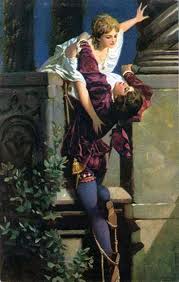
EC: What’s your creative process like? Any favorite spots to write, talismans or rituals you utilize?
KW: Hmm, my creative process? Who knows? Mule-headed-ness helps. It’s work, you know? Every day, sit down at the computer, turn it on, start pounding the keys, guzzle coffee, swear, doubt myself, keep putting words on the page, keep herding sentences into little paragraph-like piles and hope they’re worth revising later. During semesters, I usually write for about an hour or so early mornings. Summers are better. I spend mornings outside, trying to coax vegetables from almost an acre of red clay, then write for several hours in the afternoon. I usually write at home, where I have a small office. It’s really more a cluttered closet stacked with books, notes, my computer, and room enough for me and Cooper, my dog, but it works. Sometimes I’ll go in early and write at work. Talismans or rituals? Hmm, again. Not really. Okay, I’ll admit I have minor OCD tendencies, all the light switches in the house have to point downward before I can begin, but I’m not that superstitious and don’t put much store in that sort of thing. Well, except Voodoo, ‘cause, you know, Voodoo is real. But, that’s such a demand on your time, what with all the rituals, incantations, and chickens, so I usually stick with the light switch thing. Other than that, for the most part, it’s just: sit down and write.
EC: Is this story part of a larger collection in the works? What future projects are simmering for you right now?
KW: I think so, hope it will be. I’m working on other short stories with the idea of them being part of the linked collection I mentioned. It’s still in the early stages, getting to know the other characters and such, and I’m certain there are several stories yet to be written. Hopefully, over the next year or so they’ll emerge and the collection will hold together. I have a novel manuscript completed, but I ended my last agent relationship, and I’m only casually looking for a new agent for that manuscript. I’ve also joined in a new, collaborative music project—an Americana band we’re calling the Flatland Tourists (Yes, you can follow us on Facebook! Thanks for asking.). I’m writing and co-writing material for that project. We’re hoping to get a CD out in the world late this year, early next year. We have material now and we’re just starting to go out and play those tunes around locally, but it’s new and fresh and I’m really enjoying writing with these folks, so new material keeps coming. Between that and the short stories, I have plenty of writing projects to keep me busy for a while.
EUGENE CROSS is the author of the short story collection “Fires of Our Choosing,” which was long listed for the Frank O’Connor International Short Story Award, and was named the Gold Medal winner in the Short Story category by the Independent Publisher Book Awards. His stories have or will appear in Glimmer Train, Narrative Magazine, American Short Fiction, Story Quarterly, TriQuarterly, and Callaloo, among other publications. He is the recipient of scholarships from the Chautauqua Writers’ Festival and the Bread Loaf Writers’ Conference, as well as fellowships from Yaddo and the Sewanee Writers’ Conference. He can be found online at www.eugenecross.com

